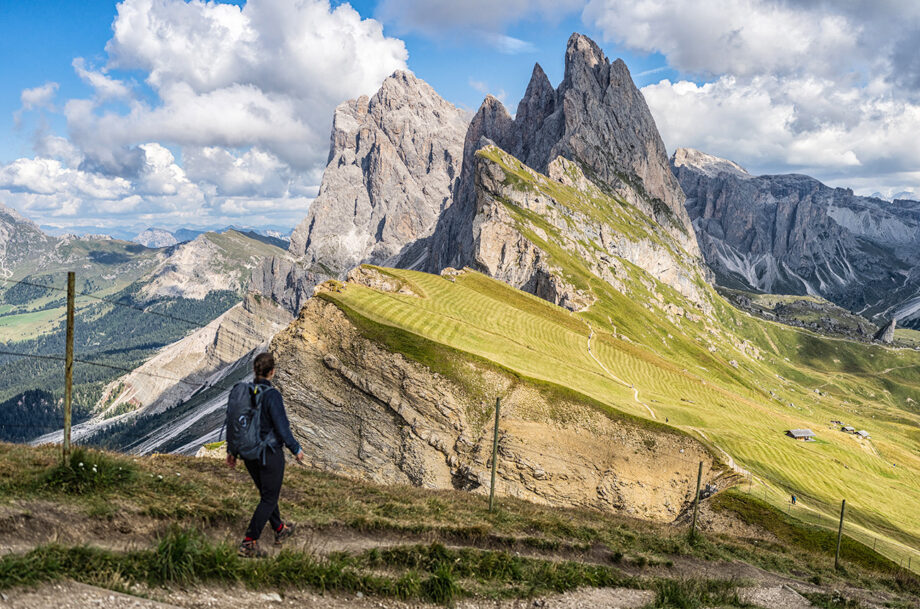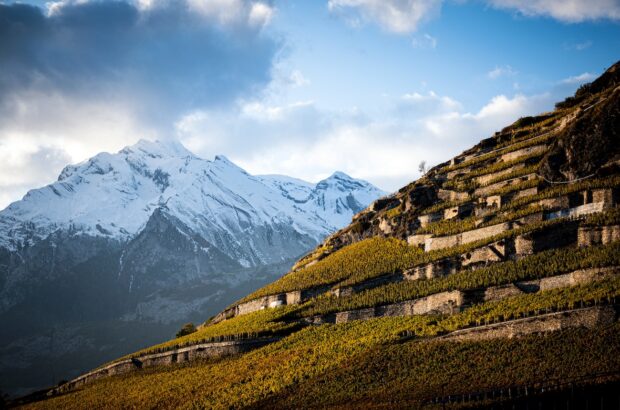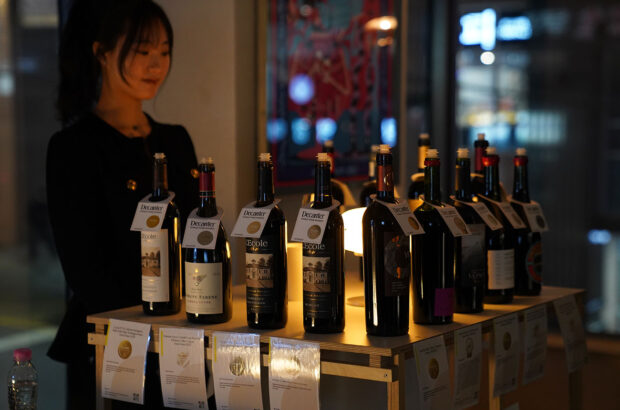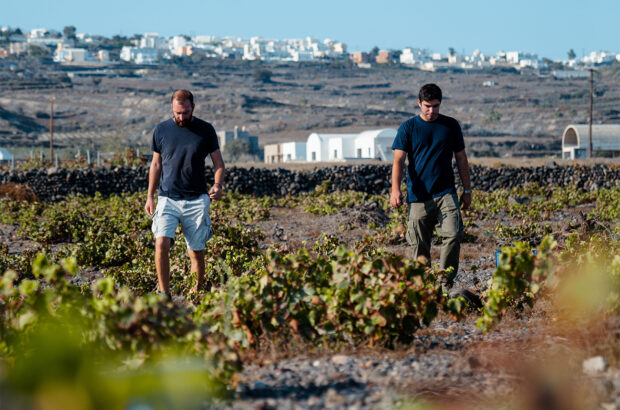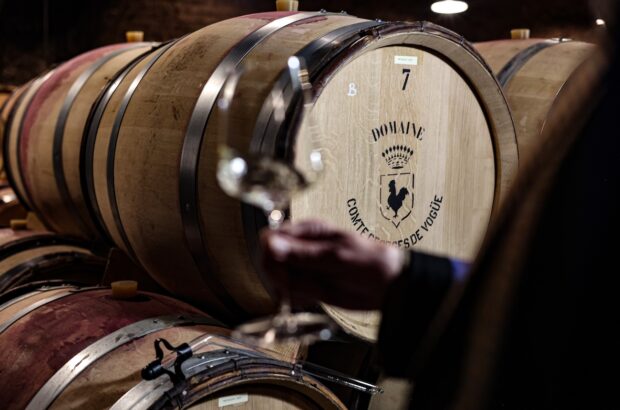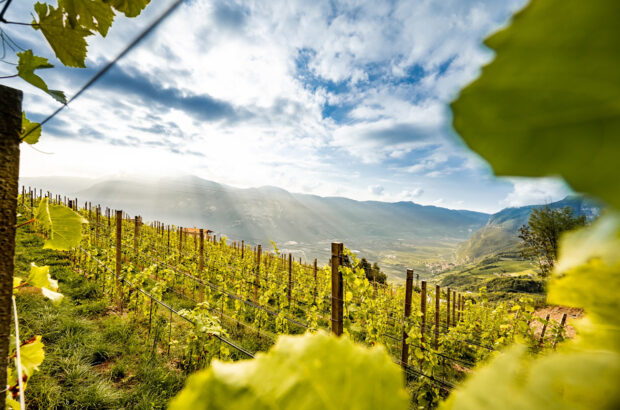The Südtirol/ South Tyrol in northern Italy’s Trentino-Alto Adige region is justly famous for its stunning views, tiny hamlets, and the extraordinary rock formations that mark the beginning of the Dolomite mountain range.
This province has produced wine for at least three millennia, and today it’s at the top of its game. There is certainly no better way to take in the majesty and bounty of the region than by hiking from town to town.
Being on foot means going deep, not broad. Choosing one relatively small area to explore allows for intimacy with the land and the culture. Besides, you can roam the region more widely each evening by way of the wine list! Most gasthöfe we stayed at had excellent food and extensive cellars, with local producers and Italy as a whole well represented.
The plan
Rise with the sun and enjoy a delicious breakfast. If you love breakfast as much as I do, have a game plan – these inns offer an impressive selection.
Hike 14-17km per day up mountains, down canyons, through woods and meadows, your luggage magically whisked on ahead.
Enjoy a simple but splendid picnic on the trail, of local cheeses, fruits, and cured meats.
Hit the sauna in the afternoon, then a gentle swim. Our activities by day were to leave us feeling fit, virtuous, even. Fully ‘detoxed’, we’d be ready for an aperitivo followed by a slap-up dinner with plenty of wine – the ‘retox’.
Rest deeply (thank you mountain air), and repeat.
But what about the wines?
In the Südtirol, traditional agricultural ways of life dominate: pasturing livestock, apple farming, and, on the slopes running alongside the Adige river where little but vitis vinifera can thrive, wine growing.
The wines of the Alto Adige region are universally elegant and restrained, possessing great minerality. Pinot Noir, Pinot Bianco and Chardonnay are standouts.
Lagrein is the workhorse red, unfussy and food-friendly. Look out for Lagrein Kretzer, the rosé variant.
Besides Schiava, St Magdalena is the area’s other main autochthonous variety; a light, bright, red being taken seriously by a new generation of winemakers. I’m calling it now as one to watch!
Hiking in the Südtirol: The itinerary
Day one
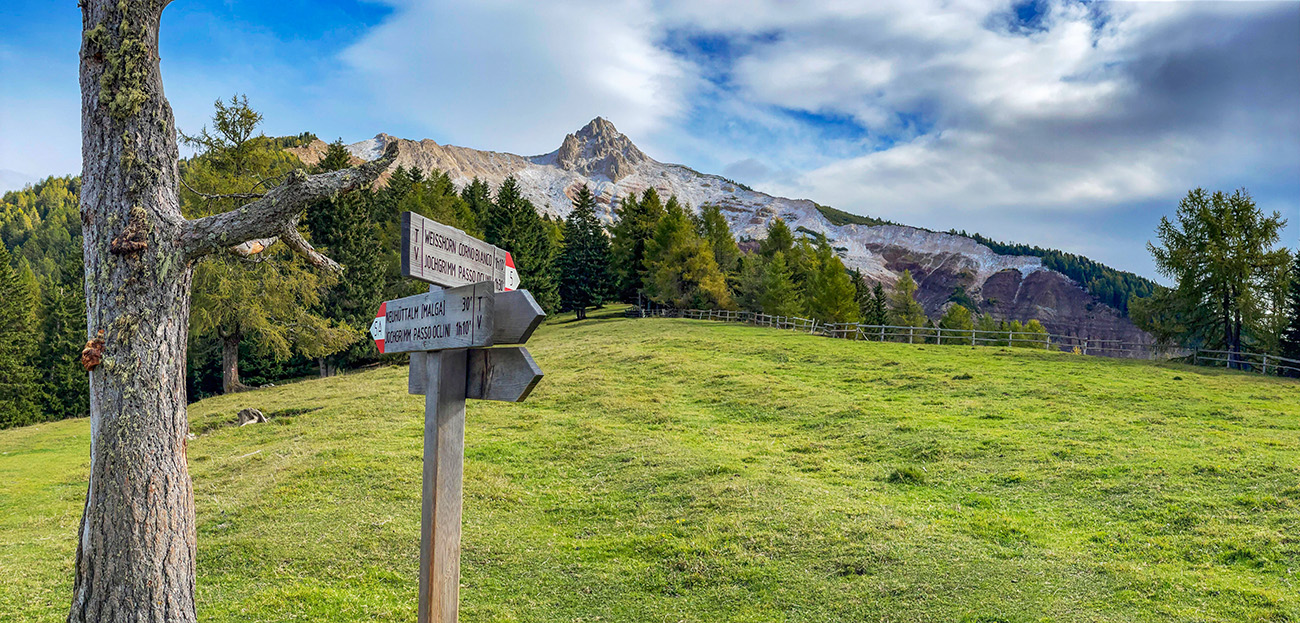
Signpost to the Weisshorn (Corno Bianco). Credit: imageBROKER / Michael Szoenyi/ Alamy
We arrived at Hotel Zirmerhof, a delightful inn and spa in the tiny town of Radein as the sun was setting. The stillness, the beauty, the smell of freshly mown meadows of camomile and alpine flowers: it made one feel complete and at peace.
Next morning we set off past chilled out long-horned cows into forests and wildflower meadows. Both map and app were useful. After a steep uphill section, we came out onto the blindingly white rocks composed primarily of calcium, magnesium and carbonate that give this area its name, and make the Dolomites so striking.
We picnicked at the top of the Weishorn, or Corno Bianco, the highest mountain in the southern Dolomites, with stunning views and breezes making it all the more delicious.
Changing tack, down through a dwarf pine forest and back into meadows, the music of cowbells called us home. A stop for a well deserved refreshment at the Gurndin Alm, and back to base.
Hotel Zimerhof specialises in traditional fare, with beef raised on the land. It shares its space with Radoin 1560, a jewel of a winery built by Sepp Perwanger to further the winemaking started by his grandfather. Take it from one who knows – his cellar and winemaking are spot-on! No surprise that his ’21 Pinot Noir, ’22 Chardonnay, and ’22 Gewürtztraminer were delicious.
Day two
Descending into the Bletterbach canyon – hardhats required but easily obtained at the tourist office in Radein – with waterfalls, astounding vistas and birdsong. Out of the canyon along the trail we fell into Lahneralm for an easygoing lunch of knödel, pasta and speck.
South Tyrolean food is a delightful blend of Italian and Austrian. For a wine geek like myself, ordering a glass of unlabelled Weissburgunder for lunch is a refreshing reminder that wine does not have to be precious but can be laid back and fun as well.
Out of the pine forest, we hiked into Aldein and quickly found Gasthof Krone, sweaty, tired and ready to sauna. Dinner at the hotel was regional, fresh, perfectly executed and unpretentious. A 2023 Elena Walch Cardellino Chardonnay was the perfect match. With a lovely mineral zip – classic Alto Adige.
Day three
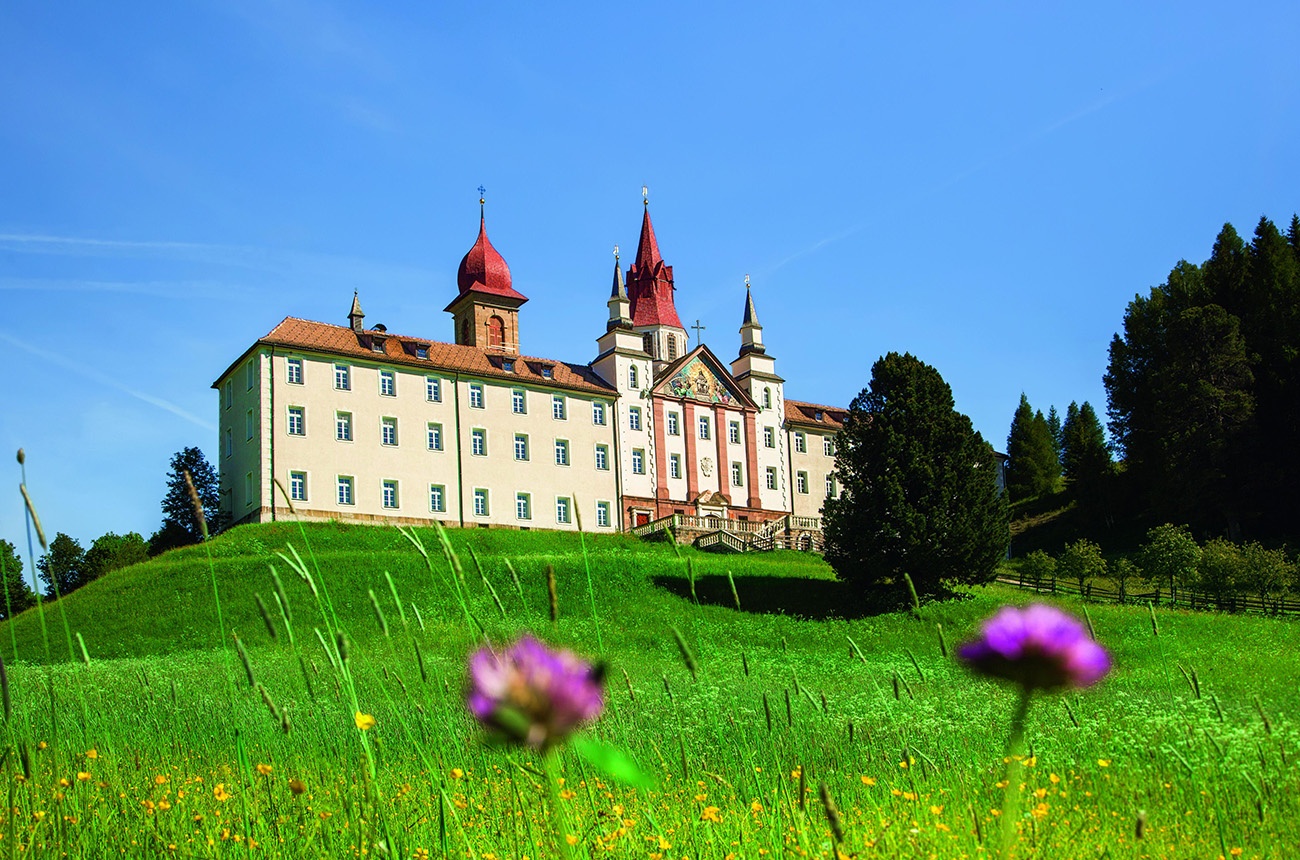
The basilica and monastery of Maria Weißenstein is well-worth a visit. Credit: dpa picture alliance / Alamy
Dropped off at the Maria Weißenstein, a pilgrimage site dating to 1553 and today an impressive basilica and monastery, we joined the E5 (European long-distance path), which runs from Brittany to Venice. Following a bubbling stream down into the forest, wildflowers, wild berries, moss and more made it deeply green. While this was our longest hike, at 17.5km, it was also the most gentle.
The overlook at Sasso Rosso gave us our first view of vineyards sloping down to valley floor, the Adige river, and the town of Bolzano at the bottom. A few kilometres to go and we reached Gasthof Kohlern, perched on a hillside overlooking the valley.
Day four
Sitting on our veranda, we were thinking back to last night’s display of thunder and lightning set against the backdrop of the valley and the Dolomites beyond. The craggier peaks were giving strong Tolkien-esque vibes.
Early starts are advisable; discernment is key. In rainy weather visibility is lost and the trails may be closed. We were mindful that one rash move could bring our trip to a swift finish. Hiking boots, sunscreen, hat, sunglasses, water bottle and navigation equipment: all essential. Hiking poles recommended.
Had the weather handed us a non-hiking day it would hardly have mattered, such is the beauty and serenity here. As with Hotel Zirmerhof, Gasthof Kohlern would be perfect for daily excursions, be they hikes or visits to the many wineries within driving range of Bolzano. The wine list would keep you happy for some time!
We taxied into Bolzano, the bustling centre of Alto Adige. The town square is beautiful and calm. Enotecas – including a Signorvino outpost – and wine shops abound. Bolzano is also home to the extraordinary South Tyrol Museum of Archeology, built to house and honor Ötzi, the 5,300-plus year old mummy discovered in the ice in 1991.
Zig-zagging up to Gasthof Kohlern, with vineyards giving way to apple trees, we cooled off in the pool, facing the green velvet mountains in front of us.
We had two delicious dinners here. In the name of scholarship, I started with a lovely glass of ’23 Unterhofer Kerner. Our daughter tried the ’22 insriGer St Magdalener Classico, perfect with antipasti. Next, a fine bottle of ’19 Ferruccio Carlotto Filari di Mazzon Pinot Noir, which complimented the braised pork and crespelle. The next night we enjoyed the ’20 Terlan Pinot Bianco Riserva Vorberg. Alto Adige: please send the world more Pinot Bianco!
Day five
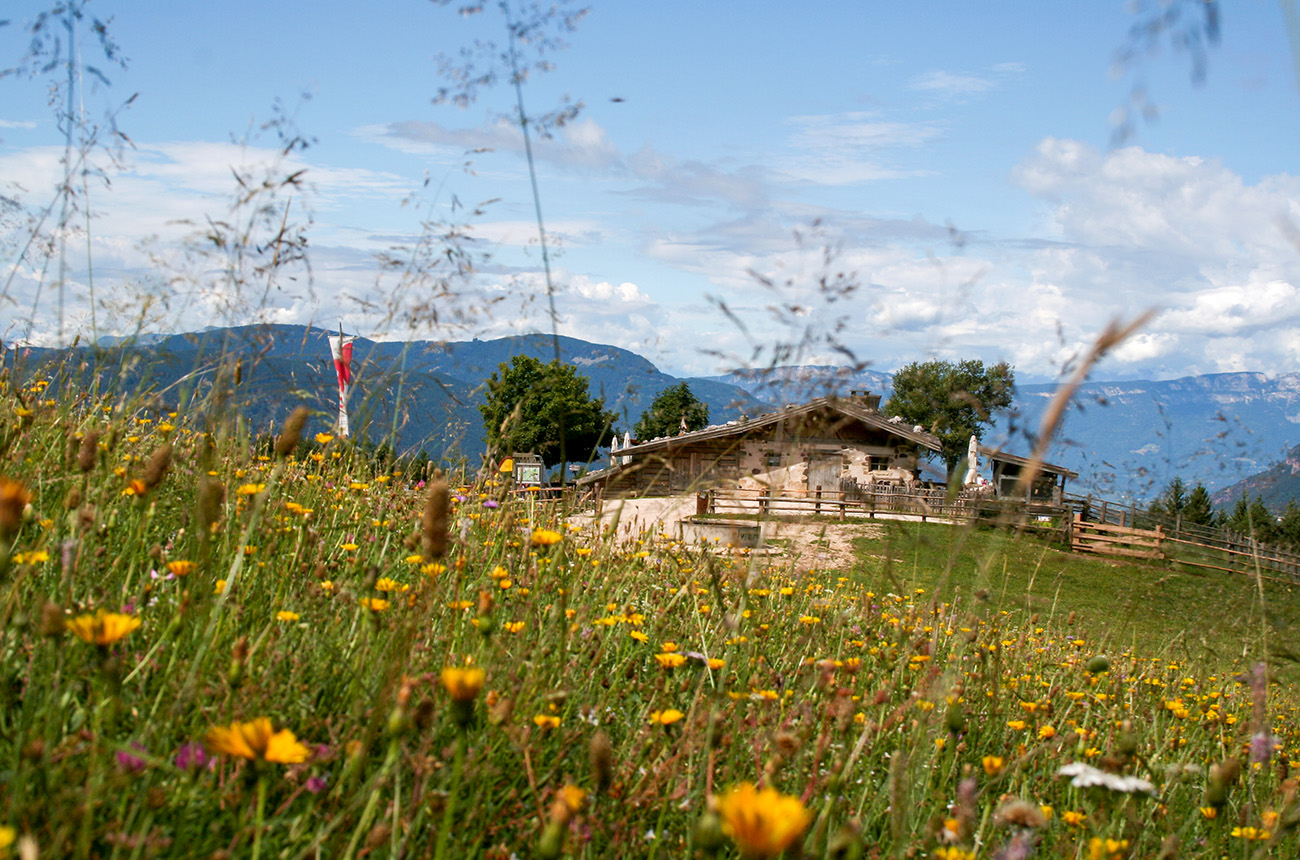
Tuff Alm, Völs am Schlern. Credit: Tuff Alm
After another delicious breakfast we were delivered to the foot of the Schlern mountain, and entered a multi-recreational park.
Hiking on and up to an opening in the forest we briefly stopped at Tuff Alm, a refreshment hut with amazing views. Leaving the families at play and picking up the forest trail, smells of linden and pine were all around.
It’s clear why this region fought so hard to become an autonomous province: the culture is distinct and stretches back hundreds of years. Today’s taxi driver explained the delicate balance this area tries to maintain between preserving its natural beauty and traditions, while being part of the modern world.
Outsiders buying holiday homes puts pressure on the locals. But agro-tourism boosts the economy. As hikers, we enjoyed the area while being as low-impact as possible. That felt good, and we felt welcome.
About half-way for the day, we picnicked on a shady bench in the forest. Then, on to Kastelruth, passing medieval ruins and the picturesque church of St Valentin in Seis.
In Kastelruth, we washed down prosciutto e melone and pasta with a bottle of St Magdalena – when it’s 32℃ outside there’s a case to be made for slightly chilled reds.
Day six
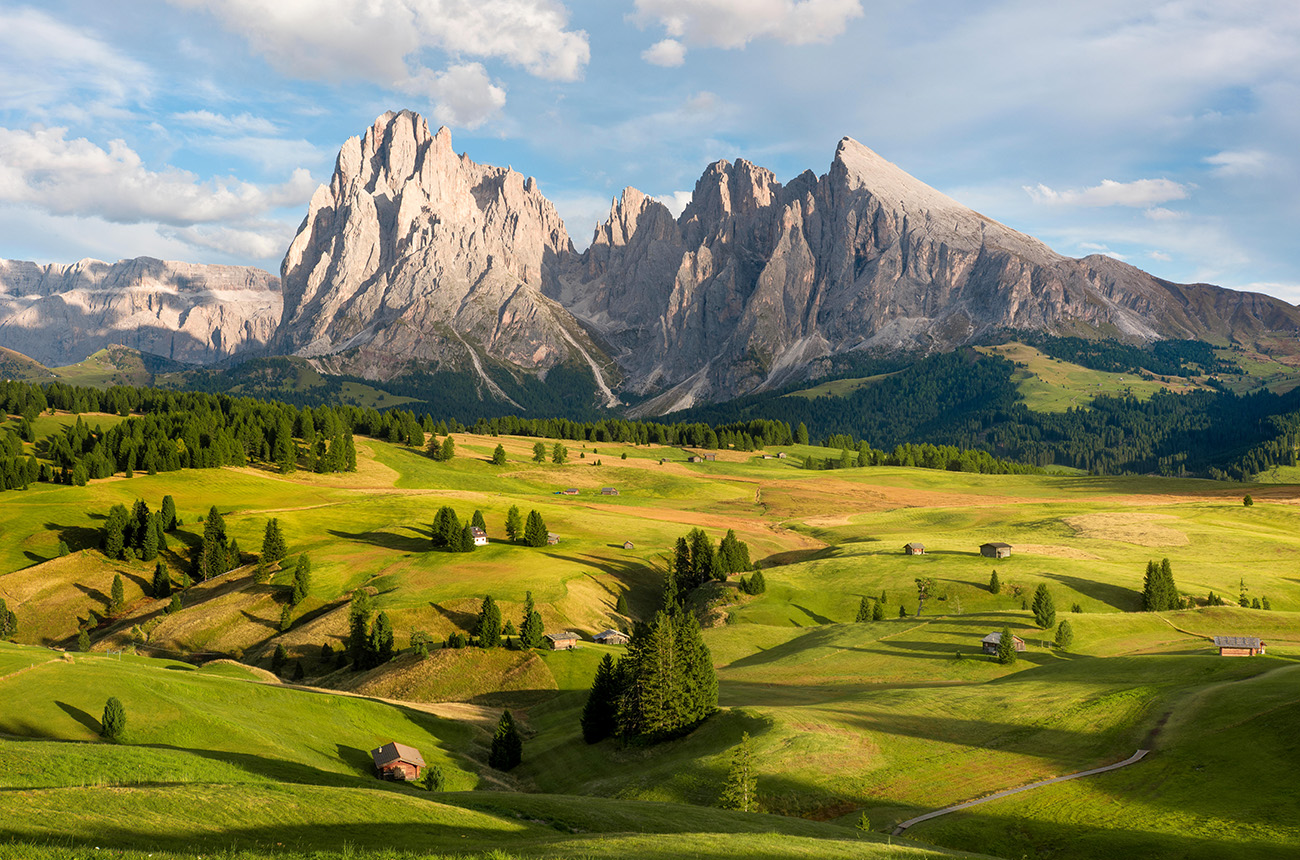
Seiser Alm, Europe’s largest and highest Alpine meadow. Credit: mauritius images GmbH / Alamy
The last day of hiking! Approximately 138 trails head out of Kastelruth, of all lengths and levels. Up to Seiser Alm, Europe’s largest and highest meadow we went. Passing honeysuckle vines we crossed a large meadow and began our steep ascent. There is a funicular that lands near the summit for those not hiking.
After just over 8km we arrived at the top, ready to picnic. There’s also a restaurant at the summit, Arnika Hütte if you want to travel a bit lighter. Heading back down we felt jubilant – an amazing week of hiking was in the books and a round of Hugo Spritzs was imminent.
Our itinerary included moderately difficult hikes at medium-high altitudes. Training beforehand was beneficial, and despite the effort, the payoff was extraordinary. We were not just looking at the meadows and mountains, we were walking through them. And no need for a rental car!
Day seven
To soften the blow of this dream coming to an end, we took the train from Bolzano to Riva del Garda, for some lazy beach days in Lake Garda. But that’s another story.
Notes
We booked our trip through Inntravel, a British self-guided tour agency. It organised the itinerary, hiking instructions, hotels, most meals, and transport for our luggage.
We flew into Verona, giving ourselves two days to get over jet-lag (coming from North America) and do some sightseeing before taking the train up to Ora/Auer to start our hiking holiday.
The majority of inhabitants in the Südtirol speak German. You can certainly speak Italian, and you’ll get by with English.

